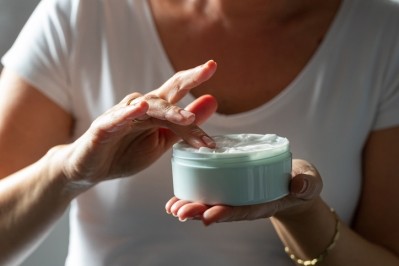China skin microbiome: Females with sensitive skin have less species diversity and richness

Funded by the Guangzhou Science and Technology Program, the research also found that people with sensitive skin had lower hydration levels, higher levels of Neisseria genus, and lower levels of Neisseriaceae family, which is likely due to the weaker microbial barrier.
Sensitive skin causes itching, dryness, redness, and swelling, after exposure to dry and cold climates, or cosmetic products due to the damaged skin barrier function. Globally, self-declared sensitive skin is observed in about 70% of the adult population.
Similar to the gut microbiome, every individual’s skin carries a unique microbial population, so researchers in China sought to analysis skin microbiome in 60 female subjects in Guangzhou with normal skin or sensitive skin.
“Comparing the microbiomes of normal skin and sensitive skin could help us find the cause of sensitivity and advance our understanding of the mechanisms that underlie the pathophysiology of sensitive skin,” they wrote in the Clinical, Cosmetic and Investigational Dermatology.
Data collection
The study recruited 59 female subjects (20 to 40 years old), who were then classified into the normal skin (n=30) and sensitive skin group (n=29).
Normal skin was defined as a Huaxi SS Questionnaire score between 12 to 17, and a Lactic Acid Stimulation Test (LAST) of 0.
Sensitive skin was identified with a Huaxi SS Questionnaire score of 18 to 32, and a LAST score more than or equal to 3.
Skin hydration and transdermal water loss was assessed by a skin tester.
Skin on the cheek and jaw were sampled and the DNA of the bacterial flora on the facial skin surface was extracted and was subjected to 16S rRNA sequencing.
Moisture
Findings revealed that skin hydration levels was significantly lower in the sensitive skin group compared to the normal skin group (p=0.032).
The hydration levels in the normal and sensitive skin groups were approximately 63 and 58, respectively.
The sensitive group also had a non-significantly higher transdermal water loss than the normal skin group (p=0.0572).
Previous studies have suggested that shown an impaired skin barrier function may induce water loss.
However, there is no significant difference in transdermal water loss, which is similar to previous research.
Researchers explained: “The lack of a significant difference may have been due to insufficient sample size or lack of damage to the stratum corneum. The stratum corneum or horny layer in the epidermal barrier acts in the control of transdermal water loss. It indicates that the itching of sensitive skin may be related to nerve sensitivity and dry skin, rather than damage to the stratum corneum.”
Skin microbiome
This research also revealed there were 5343 and 3948 genera in the normal and sensitive skin groups respectively, of which 2944 genera were shared.
The sensitive skin group was observed to have a lower species richness and diversity than the normal skin group.
Microbiotas in both groups were mainly composed of three bacterial phylum (Proteobacteria, Firmicutes, and Actinobacteria) with no significant differences.
Although, the normal skin group had higher levels of Intrasporangiaceae (within the phylum Actinobacteria), compared to the sensitive skin group.
“We can hypothesise that the presence of Intrasporangiaceae accelerates the degradation of antibiotics on the skin surface and maintains the species diversity of the NS surface.”
The sensitive group had significantly higher abundance of Neisseria genus (within the Neisseriaceae family) compared to the normal skin group, and a significantly lower abundance of Neisseriaceae.
The Neisseria genus comprise of 11 species that colonise humans, of which two are pathogens.
“Subjects with sensitive skin have significantly reduced skin hydration, accompanied by a decrease in species diversity and richness, which may be relevant to the weakening of the microbial barrier (due to the decrease in Neisseriaceae or increase in Neisseria),” researchers said.
They recommend exploring Neisseriaceae in treatment for sensitive skin.
“Our findings will not only contribute to the development of skin care products but also provide evidence for developing diagnostic and treatment strategies of sensitive skin syndrome, although more research is necessary to further determine the relationship between sensitive skin, skin barrier, and skin microbiota.”
Source: Clinical, Cosmetic and Investigational Dermatology
https://doi.org/10.2147/CCID.S307668
“Analysis of the Bacterial Flora of Sensitive Facial Skin Among Women in Guangzhou”
Authors: Zhifen Qiao, et al.
![Amorepacific said it intends to use the sweat-proof wearable skin measurement device to produce cosmetic products according to environmental needs. [Getty Images]](/var/wrbm_gb_food_pharma/storage/images/_aliases/wrbm_medium/publications/cosmetics/cosmeticsdesign-asia.com/headlines/formulation-science/amorepacific-to-use-wearable-device-to-develop-cosmetics-for-specific-environmental-needs/12673549-1-eng-GB/Amorepacific-to-use-wearable-device-to-develop-cosmetics-for-specific-environmental-needs.jpg)

![Study showed that sandalwood is a more potent antioxidant than vitamin E. [Getty Images]](/var/wrbm_gb_food_pharma/storage/images/_aliases/wrbm_medium/publications/cosmetics/cosmeticsdesign-asia.com/headlines/formulation-science/quintis-to-double-down-on-cosmetics-market-on-the-back-of-antioxidant-effectiveness/12632551-1-eng-GB/Quintis-to-double-down-on-cosmetics-market-on-the-back-of-antioxidant-effectiveness.jpg)
![Data from Lumina Intelligence shows a 236% probiotic cosmetic product hike in the last two years and rising online engagement with these offerings [Getty Images]](/var/wrbm_gb_food_pharma/storage/images/_aliases/wrbm_medium/publications/cosmetics/cosmeticsdesign-europe.com/article/2021/06/30/skinbiotics-cosmetic-probiotic-interest-and-engagement-soars-online-according-to-lumina-intelligence/12608998-1-eng-GB/Skinbiotics-cosmetic-probiotic-interest-and-engagement-soars-online-according-to-Lumina-Intelligence.jpg)






![Able C&C has furthered its partnership with Japanese discount chain Daiso with new makeup launch. [A'pieu]](/var/wrbm_gb_food_pharma/storage/images/_aliases/wrbm_tiny/publications/cosmetics/cosmeticsdesign-asia.com/headlines/brand-innovation/a-pieu-and-daiso-launch-exclusive-2-makeup-line/17339117-1-eng-GB/A-pieu-and-Daiso-launch-exclusive-2-makeup-line.jpg)
![Down Under Enterprises is setting sights on the Asian market as environmental sustainability and traceability become increasingly important. [Getty Images]](/var/wrbm_gb_food_pharma/storage/images/_aliases/wrbm_tiny/publications/cosmetics/cosmeticsdesign-asia.com/headlines/market-trends/down-under-enterprises-shifts-focus-to-china-as-environmental-sustainability-traceability-come-into-the-spotlight/17304932-1-eng-GB/Down-Under-Enterprises-shifts-focus-to-China-as-environmental-sustainability-traceability-come-into-the-spotlight.jpg)
![News updates from Shiseido, Dr.Ci:Labo, Sephora, and more. [Shiseido]](/var/wrbm_gb_food_pharma/storage/images/_aliases/wrbm_tiny/publications/cosmetics/cosmeticsdesign-asia.com/headlines/brand-innovation/updates-from-shiseido-dr.ci-labo-sephora-and-more/17334944-1-eng-GB/Updates-from-Shiseido-Dr.Ci-Labo-Sephora-and-more.jpg)

![Clariant has underscored the importance of localisation strategies and distribution capabilities in China with beauty trends evolving at a rapid pace. [Getty Images]](/var/wrbm_gb_food_pharma/storage/images/_aliases/wrbm_tiny/publications/cosmetics/cosmeticsdesign-asia.com/article/2024/04/16/clariant-emphasises-importance-of-localisation-in-the-era-of-viral-trends/17327969-1-eng-GB/Clariant-emphasises-importance-of-localisation-in-the-era-of-viral-trends.jpg)

![We dive into our most-read stories on formulation and science. [Getty Images]](/var/wrbm_gb_food_pharma/storage/images/_aliases/wrbm_tiny/publications/cosmetics/cosmeticsdesign-asia.com/headlines/formulation-science/skin-science-latest-stories-on-cosmetics-science-and-formulation/17334719-1-eng-GB/Skin-science-Latest-stories-on-cosmetics-science-and-formulation.jpg)


